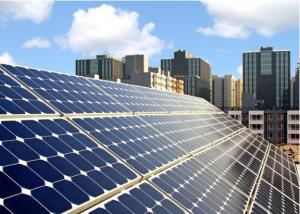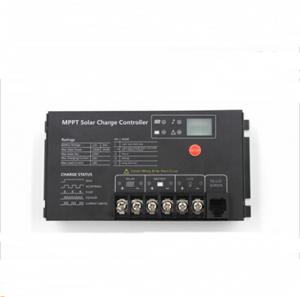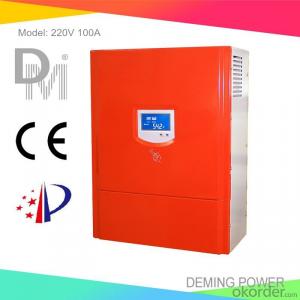Pure Sine Wave Power Solar Inverter 1000W
- Loading Port:
- Shekou
- Payment Terms:
- TT or LC
- Min Order Qty:
- 100 pc
- Supply Capability:
- 100000 pc/month
OKorder Service Pledge
OKorder Financial Service
You Might Also Like
Product Description
Solar 1000w 1500w 2000w 3000w Pure Sine Wave Inverter 12V 24V 48V to 230V
1.Pure Sine Wave Inverter Features:
1. 1kw-6kw power range,12v / 24v / 48vdc optional,use copper transformer to increase efficiency;
2.165v-260v wide input voltage range ,40-70HZ input frequency;
3.low frequency and pure sine wave which can run inductive loads . main use for home and office: computer, lights, fan,tv, fridge,air-condition .etc;
4. built in 4 steps supper battery charger 30-75A to save charge time.Charger (bulk, absorption, float);
5. with 200cm battery cable;
6. Support generator 1hp/2hp/3hp;
7. Support solar system;
8. Remote control / RS232 , monitor inverter working by computer;
9. CE/ SONCAP certificate;
10. Charge current is adjustable 25%,50%,75%.100%;
11.Hybird solar system , Solar advantage, battery advantage;
NEW FUNCTION :(Solar Priority/Battery Priority Function)
SOLAR HYBIRD INVERTER : Solar Energy , City power , DC to AC can transfer automatically
When battery voltage is low (3 options---10v/10.5v/11v) , it will turn to city power automatically
220V/230V dc/ac pure sine wave best ups solar power inverter generator 1000W 1500W 2000w 3000w 4000w 5000w 6000w solar inverter
2. Pure Sine Wave Inverter Specification
| Model | EP3000 Series | 1000 | 2000 | 3000 | 3000 | 4000 | 5000 | 6000 |
| Capacity | W | 1000W | 2000W | 3000W | 3000W | 4000W | 5000W | 6000W |
| Battery | DC Voltage (Optional) | 12V | 24V or 12 | 24V | 48V | 48V | 48V | 48V |
| Recharge current | 35+/-5A | 35+/-5A | 45+/-5A | 35+/-5A | 35+/-5A | 40+/-5A | 50+/-5A | |
| 3 - stage charge | Boost CC → Boost CV → Float | |||||||
| Input | Nominal Voltage | 120VAC or 230VAC | ||||||
| voltage trip range | 90v+-4% to 140v+-4% or 184v/154v +-4% to 253v+-4% | |||||||
| Voltage re engage range | 100v+-4% -135v+-4% or 194v/164v+-4% to 243v+-4% | |||||||
| Max input AC voltage | 150VAC or 270VAC | |||||||
| Frequency | 50Hz or 60Hz(Auto detect) | |||||||
| Current | 25 Amps in maximum | |||||||
| Efficiency | 95% | |||||||
| Output | Voltage | 120V or 230V AC ±5% | ||||||
| Wave form | Pure Sine wave | |||||||
| Frequency | 50/60Hz | |||||||
| voltage range | Depends on battery type | |||||||
| Transfer time | ≤5ms | |||||||
| Protection | Overload | 15 mins for 125%, 60s for 150%, 20s for over 150s | ||||||
| Short circuit protection | Fault after 10 secs | |||||||
| Electric Fans | Thermo -controlling | |||||||
| Static Consumption | < 10 Watts | |||||||
| Surroundings | Temperature, humidity | 0-50 °C ,90%, no condensing | ||||||
| Surge rating (10s) | 3000W | 6000W | 9000W | 9000W | 8000W | 10000W | 12000W | |
| capable of starting electric moto | 1HP | 2HP | 3HP | 3HP | 4HP | 5HP | 6HP | |
| Physical | Mount | Horizontal wall mount | ||||||
| Size CM (H x W x D) | 44.2 x 21.8 x 17.9 | 63.0 x 21.8 x 17.9 | ||||||
| Carton CM (H x W x D) | 58.0x32.0x31.0 | 75.5 x32.0x31.0 | ||||||
| N.W ( KGS) | 19 | 21 | 25 | 25 | 35 | 38 | 40 | |
| G.W (KGS) | 21 | 23 | 27 | 27 | 37 | 40 | 42 | |
| Remark | Specification for reference , subject to change without prior notification | |||||||
| We accept order with special specifications | ||||||||
3. Pure Sine Wave Power inverter Packing:
Power inverter 1000W 2000W 3000W 4000W 5000W 6000W Inverters

4. EP3000 Pure Sine Wave Solar Power Inverter on the Solar System:

- Q:How does a solar controller handle short-circuit or overload conditions?
- To safeguard the solar panel system from damage, a solar controller is specifically designed to handle short-circuit or overload situations. When such incidents occur, the solar controller utilizes various mechanisms to guarantee the system's safety and proper functioning. First and foremost, the solar controller typically incorporates an integrated fuse or circuit breaker. This component acts as a protective device that interrupts the current flow when it surpasses a specific threshold. In the event of a short-circuit or overload, the fuse or circuit breaker automatically trips, effectively cutting off the power supply and preventing any further harm to the solar controller and connected equipment. Furthermore, a solar controller may employ advanced electronic circuitry to detect short-circuit or overload conditions. These circuits continuously monitor the current flowing through the system and compare it to predetermined limits. If the current exceeds the specified limits, the controller promptly takes action to mitigate the situation. One common strategy employed by solar controllers is the utilization of pulse width modulation (PWM) or maximum power point tracking (MPPT). These techniques dynamically adjust the output voltage and current of the solar panel to optimize power transfer while preventing excessive current flow. In the case of a short-circuit or overload, the solar controller adjusts the output in real-time to ensure that the current remains within safe limits. Moreover, modern solar controllers often include additional protection features such as overvoltage protection, reverse polarity protection, and temperature compensation. These additional safeguards enhance the controller's ability to handle short-circuit or overload conditions by preventing potential issues that could arise from these scenarios. Overall, a solar controller utilizes a combination of protective devices, electronic circuitry, and advanced control techniques to effectively manage short-circuit or overload situations. By promptly detecting and responding to these occurrences, the solar controller guarantees the safe and efficient operation of the solar panel system, safeguarding both the equipment and the integrity of the power supply.
- Q:What is the standby current consumption of a solar controller?
- The standby current consumption of a solar controller refers to the amount of electrical current that is drawn from the power source when the controller is not actively controlling or regulating the solar system. It is typically very low, ranging from a few milliamperes (mA) to microamperes (μA), and is designed to minimize energy wastage when the solar system is not in use.
- Q:How do I determine the maximum load output voltage for a solar controller?
- To determine the maximum load output voltage for a solar controller, you need to consider a few factors. 1. Consult the controller's specifications: Check the user manual or product specifications provided by the manufacturer. The maximum load output voltage is usually mentioned in these documents. Look for the "maximum load voltage" or a similar term. 2. Consider the solar panel voltage: The solar controller regulates the voltage from the solar panel to the load. Therefore, the maximum load output voltage should be lower than the maximum voltage that the solar panel can produce. Ensure that the controller's maximum load output voltage is compatible with the solar panel's specifications. 3. Consider the load voltage requirements: Determine the voltage requirements of the devices or appliances you plan to connect to the solar controller. Ensure that the maximum load output voltage of the controller is suitable for powering these devices. If the load voltage requirements are lower than the controller's maximum load output voltage, it should work fine. 4. Safety precautions: It is important to note that exceeding the maximum load output voltage can potentially damage the connected devices or appliances. Therefore, it is crucial to ensure that the load voltage requirements are within the specified range of the solar controller. By considering the controller's specifications, the solar panel voltage, load voltage requirements, and taking necessary safety precautions, you can determine the maximum load output voltage for a solar controller effectively.
- Q:What is the purpose of a solar controller?
- The purpose of a solar controller is to regulate and optimize the charging and discharging of solar batteries, ensuring efficient and safe operation of solar power systems.
- Q:How do I connect a solar controller to a remote monitoring system?
- To connect a solar controller to a remote monitoring system, you will typically need to follow a few steps. First, ensure that your solar controller is compatible with a remote monitoring system. Check the specifications and documentation provided by the manufacturer to confirm this compatibility. Next, identify the communication method supported by your solar controller and the remote monitoring system. It could be via Wi-Fi, Ethernet, cellular network, or other protocols. This information will help you determine the necessary hardware or software components required for the connection. Once you have the necessary components, follow the instructions provided by the remote monitoring system to set up the connection. This may involve configuring network settings, entering authentication details, or registering your solar controller on the monitoring platform. Ensure that both the solar controller and the remote monitoring system are powered on and connected to the same network or communication channel. Test the connection to verify that data from the solar controller is being transmitted and displayed on the remote monitoring system. If you encounter any difficulties during the setup process, consult the user manuals or reach out to the manufacturers for further assistance.
- Q:Can a solar controller be used in a solar-powered data center?
- Yes, a solar controller can be used in a solar-powered data center. A solar controller regulates the charging and discharging of batteries in a solar power system, ensuring efficient energy utilization. In a solar-powered data center, a solar controller would play a crucial role in managing the power supply, optimizing energy storage, and maintaining a stable power output for the data center's operations.
- Q:Can a solar controller be used with a solar lighting system?
- Yes, a solar controller can be used with a solar lighting system. A solar controller helps regulate the charging and discharging of the batteries in a solar lighting system, ensuring optimal performance and longer battery life. It also helps protect the batteries from overcharging or deep discharging. Thus, using a solar controller is highly recommended for a solar lighting system to maximize its efficiency and reliability.
- Q:How does a solar controller handle overvoltage protection?
- A solar controller handles overvoltage protection by continuously monitoring the voltage level of the solar panels. If the voltage exceeds a certain threshold, the controller automatically activates a mechanism to limit the voltage, such as diverting excess power to a secondary load or by temporarily disconnecting the panels from the battery bank. This helps prevent any damage to the system caused by overvoltage and ensures the safe and efficient operation of the solar power setup.
- Q:What is the maximum load power that a solar controller can handle?
- The maximum load power that a solar controller can handle depends on the specific model and capacity of the controller. It can range from a few hundred watts to several thousand watts. It is important to consult the manufacturer's specifications or consult with a professional to determine the exact maximum load power for a particular solar controller.
- Q:How does a solar controller handle low-light conditions?
- A solar controller is designed to regulate the charging process of a solar panel system, ensuring that the batteries are charged efficiently and preventing overcharging or damage. In low-light conditions, when there is less sunlight available, a solar controller adjusts the charging parameters to optimize the charging process and maintain the battery health. Typically, a solar controller employs a Maximum Power Point Tracking (MPPT) algorithm to maximize the power output from the solar panel under varying light conditions. This advanced algorithm continuously tracks the panel's maximum power point, adjusting the voltage and current to match the battery's requirements. During low-light conditions, the solar controller detects the decrease in solar irradiance and adjusts the charging parameters accordingly. It reduces the charging voltage to prevent overcharging and ensures that the battery is not undercharged by delivering the appropriate charging current. Moreover, some advanced solar controllers may also have a Low-Light Load Disconnect (LLLD) feature. This feature allows the controller to disconnect the load when the solar panel output drops below a certain threshold, preventing the battery from discharging excessively in low-light conditions. It helps to preserve the battery capacity and extend its lifespan. Overall, a solar controller is designed to adapt to varying light conditions and optimize the charging process accordingly. By adjusting the voltage, current, and load disconnect features, it ensures the battery is charged efficiently, even in low-light conditions, maximizing the system's performance and longevity.
1. Manufacturer Overview |
|
|---|---|
| Location | |
| Year Established | |
| Annual Output Value | |
| Main Markets | |
| Company Certifications | |
2. Manufacturer Certificates |
|
|---|---|
| a) Certification Name | |
| Range | |
| Reference | |
| Validity Period | |
3. Manufacturer Capability |
|
|---|---|
| a)Trade Capacity | |
| Nearest Port | |
| Export Percentage | |
| No.of Employees in Trade Department | |
| Language Spoken: | |
| b)Factory Information | |
| Factory Size: | |
| No. of Production Lines | |
| Contract Manufacturing | |
| Product Price Range | |
Send your message to us
Pure Sine Wave Power Solar Inverter 1000W
- Loading Port:
- Shekou
- Payment Terms:
- TT or LC
- Min Order Qty:
- 100 pc
- Supply Capability:
- 100000 pc/month
OKorder Service Pledge
OKorder Financial Service
Similar products
New products
Hot products
Hot Searches
Related keywords






























